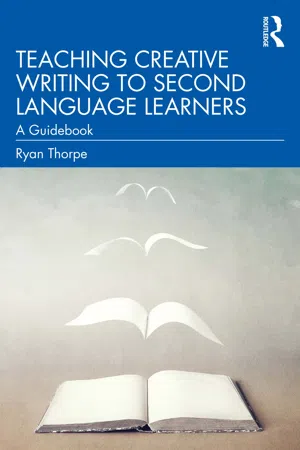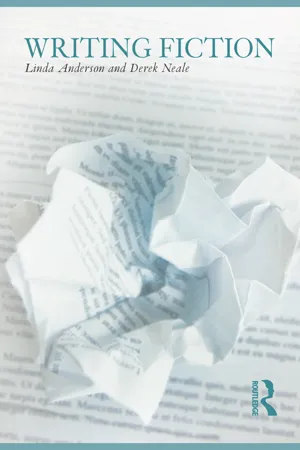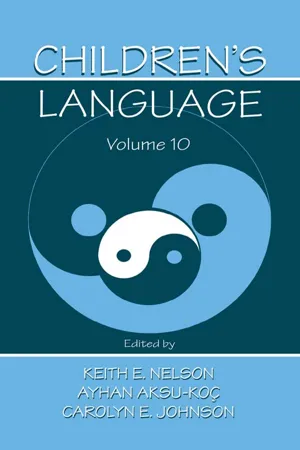Literature
Setting
The setting in literature refers to the time and place in which a story takes place. It encompasses the physical environment, historical period, and social context, providing the backdrop for the narrative. The setting can significantly influence the mood, characters, and events of a story, contributing to its overall atmosphere and impact.
Written by Perlego with AI-assistance
5 Key excerpts on "Setting"
- eBook - ePub
- Ryan Thorpe(Author)
- 2021(Publication Date)
- Routledge(Publisher)
Setting, lists all the potential uses of Setting in a work. His comprehensive list touches on most of the major ways Setting is used in creative writing. He lists reader involvement, unity (tying together other elements of a creative work), assisting in plot, developing characters, echoing a theme, and developing the writer’s imagination. This expansive list demonstrates how much Setting is integrated into a work, but a more practical approach will be needed to help writers use Setting.After a discussion of the sensory nature of Setting and an understanding of how Setting is experienced, most books focus on the application of Setting and how Setting can be expressed by a writer. David Starkey (2012 ) notes at the start of his section on Setting that “although Setting is important for conveying the atmosphere of a story, its primary function is to highlight the characters and their conflicts.” In this way, Starkey hits a familiar note: Setting is an act of character. Beginning writers often place characters in situations that feel appropriate to them, but Starkey argues (and I agree with him) that characters should seek out their Settings. If the story is following a gambling addict, placing him or her in a farmer’s market is rather uneventful. Alternatively, if he skips out on grocery shopping with his family because he gets a text about where the newest high-stakes garage game of poker is being played, then the character is finding their own Setting, and interesting characters will find interesting places.In addition, Setting must be interpreted by the characters experiencing them. Too often, the narrator intrudes into the narrative by giving an interesting and at times beautiful description of a place that has nothing to do with any of the characters. Different people notice different attributes about the same space. When I walked around my new house in Oklahoma, I saw all the space that I had and how new everything looked. My father saw a security system that didn’t work and my mother saw dust in the corners that I should have already swept up. We occupied the same space, but we observed different details. As such, the description of a place is as much an act of character as the choice to visit that place. If we were to return to our compulsive gambler, then when he visits his garage game of poker, he or she is likely to miss the holes in the drywall and the tennis ball hanging from the ceiling to mark where to park the missing minivan. Instead, the focus will linger on the sound of chips shuffling, the softness of the green baize at the poker table, or the way sweaty money smells after being surrendered. Not all details in a space are created equal. - eBook - ePub
Activated Script Analysis
An Integrative Approach to Play Analysis through Creative Expression and Devised Theatre
- Elizabeth Brendel Horn(Author)
- 2023(Publication Date)
- Routledge(Publisher)
In this chapter, we will delve further into the Theatrical Element of Setting. As with previous theatrical elements, you will find some overlap in this chapter and prior chapters within this book. The Given Circumstances Template references location, and those given circumstances help inform the Setting of the play. Likewise, information within the Character Template and Setting intersects, as who a person is and her relationship to a space can influence her behavior within it. However, the purpose of this chapter is to focus our attention explicitly on Setting. By doing so, we will explore why this Setting matters and how Setting influences the action of the play.Theatre as a literary art form has a unique relationship to Setting, as it is not solely dependent on text to evoke imagery of a location, as is the case for poetry and prose. Likewise, it is not solely dependent on visual imagery as is usually found in visual arts. It differs from television and film because theatre does not always fully realize a Setting through location shoots, realistic sets, or special effects. Some theatre productions have scenery that looks as real as life.1 Other theatre productions might rely on minimalistic platforms, a few rehearsal cubes and chairs, or even a bare stage to set the scene. In any case, analyzing Setting within a play serves to extend the story beyond the actors themselves and to evoke a sense of the world around them.1 One audience member even tried to charge their phone on the set of the Broadway production of Hand to God by Robert Askins (Viagas, 2015 ).Personal ConnectionAlison Bechdel’s 2006 graphic memoir, Fun Home, provides the basis for the musical by the same name, book and lyrics by Lisa Kron (2013) and music by Jeanine Tesori. In the memoir, Bechdel evokes the restored Victorian home in which she grew up and the memories—some good, some bad—associated with this space. Bechdel’s rich illustrations share her depiction of this space from her perspective as an adult reflecting on her childhood.Think about a space that has sentimental value to you. It can be a place in your present life or a place from your past, a place where you have lived or a place you have visited. Think about what makes this spot special to you. Use all of your senses. Consider: How does thinking about this space make you feel? Can you think of a specific memory tied to this place—and how did the Setting of this memory impact the event? Describe this sentimental Setting through a combination of drawn images and text. - eBook - ePub
- Amber Royer(Author)
- 2020(Publication Date)
- Golden Tip Press(Publisher)
For historical, research the slang appropriate to the time period, as well as how formal language was used. This may vary regionally, or by social class.Determining Geography
Will your story take place on Earth? In a real city? Or on the other side of the galaxy? Once upon a time, somewhere far away?The answer you choose will have a dramatic impact on the story you want to tell. Your Setting should impact everything about the story, influencing who your characters are and constraining their options to act.After all:-- A character who is on a submarine, days away from shore, can’t escape the problems you throw at him, whether physically through storm and mechanical failure or emotionally through problems with other people on board.-- A character who is deep inside a rainforest when she uncovers the antagonist’s villainous plan will have to deal with the difficulty of communicating where there isn’t a cell phone tower – and with traversing an unfamiliar city once she finally finds urban civilization.The Setting needs to be so integral to the story that if you changed it, you would have to re-write parts of the story. If you look at modern retellings of classic novels, you can see how the story shifts to fit the Setting of the retelling. The people involved may feel familiar but are not quite the same.Consider what would have to be different about the characters/plot events of your favorite novel if you set it: -- In the future, on Mars-- In the Victorian Era, in the same geographic location where it is now-- Right now, in Paraguay-- Ten years from now, in France-- Fifty years ago, in MontanaThere are probably some aspects of the story that couldn’t physically or culturally happen. But there are probably more events that are universally enough to be adapted into a new version of the same tale. (Look at all the various retellings of Jane Austen novels.)Use your geographic Setting to provide a local flavor to the story. This means seeding in little hints of how life is lived in that particular place, including food that is abundant in the area and description of what the landscape looks like (including the structures your characters have built to compliment it). - eBook - ePub
- Linda Anderson, Derek Neale(Authors)
- 2013(Publication Date)
- Routledge(Publisher)
interaction of character and Setting can reveal character in a dynamic way and can also generate plot. While people may have their innate qualities, they are also the product of particular places. The reverse is also true. Places are the product of people and of people’s imaginations. How we see the places in our lives reveals who we are and how we are at any given moment. A supermarket or a field or a church will look and feel very different to you on a day when you have just lost your job as opposed to a day when you’ve fallen in love.Activity 4.2 WritingInvent a character who visits a place of historical interest, one with a strong atmosphere of grief or light-heartedness or positive endeavour, for example a site of war graves, a museum of childhood, the former home of a writer. Or choose your own place.Discussion- Write a 250 word version in which your character feels unwell and is worried about what the symptoms may mean.
- Write a second version in which the same character has just purchased a ‘dream’ house. Again use up to 250 words.
Check your two versions to make sure that the ‘same’ place changes with the character’s mood. If you have chosen an inherently sad place, how does your ‘happy’ version work out? Or your ‘worried’ version, if you have a pleasant, positive Setting? Have you shown the tension between place and person? Does your ‘happy’ character feel guilty or dragged down? Or buoyant despite the environment? Is your worried character uplifted or alienated by the cheerful Setting?For instance, imagine a woman visiting the home of the Brontë sisters in Yorkshire. In an anxious mood, she might think: ‘How horrible to have that dark graveyard so near the house. I can see it from nearly every window.’ In a hopeful mood, she might be enchanted by the Brontë children’s tiny books full of their stories in minuscule handwriting. She might think: ‘I’ll have that – a big sunny place for my children to play and dream in.’ Alternatively, her anxious mood could be allayed by the gloom (‘They were so much worse off than me’); or her happiness undermined (‘They had everything to live for, but look what happened.’) - eBook - ePub
Children's Language
Volume 10: Developing Narrative and Discourse Competence
- Keith E. Nelson, Ayhan Aksu-Ko‡, Carolyn E. Johnson, Ayhan Aksu-Koc(Authors)
- 2014(Publication Date)
- Psychology Press(Publisher)
As such, it provides a backdrop to the ensuing chain of events by specifying the who, where, when, and why of the events to be reported. In the present context, story Setting is defined as serving several functions, termed here presentative, informational, and motivating, respectively. The presentative function serves to introduce the characters that will be referred to subsequently as participants in events. The informational framing function provides a spatio-locative and/or temporal framework for the events. The motivating function explains what sets the chain of events in motion and why an account of these events is relevant to the hearer/reader or of interest to the narrator. These three functions have the shared aim of orienting the audience toward what is to come. This analysis suggests that “how to start a story” constitutes an important feature of the development of both narrative knowledge and storytelling performance among children (Berman, 1995; Reilly, 1992). The ability to provide adequate background Setting information is of considerable interest for research on narrative development for a number of reasons. First, understanding how the different functions of narrative Setting develop should throw light on important cognitive abilities that relate to how children develop “a representation of the listener” (Berman & Slobin, 1994, p. 604). This shows that they take into account audience needs—in the case in point, by providing adequate background information to the story they are about to tell (Menig-Peterson & McCabe, 1978). Giving a suitable Setting to the story also means that the narrator can construct a text autonomously, by means of a self-sufficient monologic narrative rather than through interlocutor queries, prompts, and other scaffolding devices. Moreover, it requires preplanning of the text as a whole, which in the case of narrative discourse implies a hierarchical, global view of the chain of events that are about to be related
Index pages curate the most relevant extracts from our library of academic textbooks. They’ve been created using an in-house natural language model (NLM), each adding context and meaning to key research topics.
Explore more topic indexes
Explore more topic indexes
1 of 6
Explore more topic indexes
1 of 4




